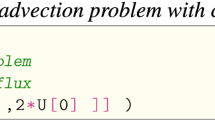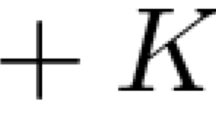Summary
The purpose of this paper is to solve the following Pythagorean functional equation:(e p(x,y) ) 2 ) = q(x,y) 2 + r(x, y) 2, where each ofp(x,y), q(x, y) andr(x, y) is a real-valued unknown harmonic function of the real variablesx, y on the wholexy-planeR 2.
The result is as follows.
Theorem. Suppose that each of p(x, y), q(x, y) and r(x, y) is a real-valued unknown harmonic function on R 2.The only systems of harmonic solutions of (1) are
and
In other words, there exists an entire function E(z) such that p(x, y) = log|E(z)|, q(x, y) = Re(E(z))and either r(x, y) = Im(E(z))or r(x, y) = −Im(E(z))and p(x, y), q(x, y) and r(x, y) satisfy (1).
Similar content being viewed by others
References
Aczél, J.,Lectures on functional equations and their applications. Academic Press, New York—London, 1966.
Aczél, J. andDhombres, J.,Functional equations in several variables. Cambridge University Press, Cambridge—New York—New Rochelle—Melbourne—Sydney, 1989.
Aczél, J. andHaruki, H.,Commentary to Einar Hille's collected works. The MIT Press, Cambridge, MA—London (edited by R. R. Kallman) (1975), pp. 651–658.
Ahlfors, L. V.,Complex analysis, 2nd ed. McGraw-Hill, New York, 1966.
Burckel, R. B.,An introduction to classical complex analysis. Vol. 1. Academic Press, New York—San Francisco, 1979.
Ganapathy, I. V.,On certain functional equations. J. Indian Math. Soc.3 (1939), 312–315.
Haruki, H.,Studies on certain functional equations from the standpoint of analytic function theory. Sci. Rep. Osaka Univ.14 (1965), 1–40.
Haruki, H.,An integral inequality in analytic function theory. Enseign. Math.19 (1973), 309–312.
Haruki, H.,A functional equation arising from the Joukowski transformation. Ann. Polon. Math.45 (1985), 185–191.
Haruki, H.,On a functional equation of Pexider type. Aequationes Math.36 (1988), 1–19.
Heins, M.,Complex function theory. Academic Press, New York—London, 1968.
Hille, E.,A Pythagorean functional equation. Ann. of Math.24 (1923), 175–180.
Hille, E.,A class of functional equations. Ann. of Math.29 (1928), 215–222.
Nehari, Z.,Introduction to complex analysis. Allyn and Bacon, Boston, 1969.
Nevanlinna, R. andPaatero, V.,Introduction to complex analysis. Addison-Wesley, Reading, MA, 1964.
Schmidt, H.,Lösung der Aufgabe 103. Jahresber. Deutsch. Math.-Verein.43 (1934), 6–7.
Author information
Authors and Affiliations
Rights and permissions
About this article
Cite this article
Haruki, H. A new Pythagorean functional equation. Aeq. Math. 40, 271–280 (1990). https://doi.org/10.1007/BF02112300
Received:
Accepted:
Issue Date:
DOI: https://doi.org/10.1007/BF02112300




